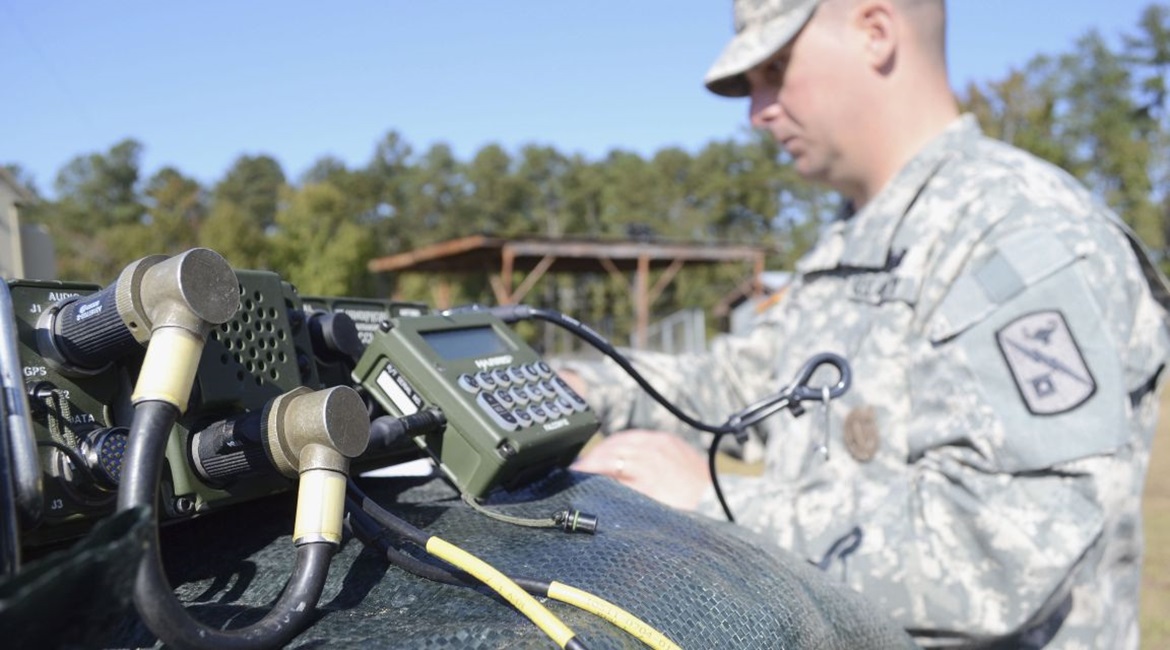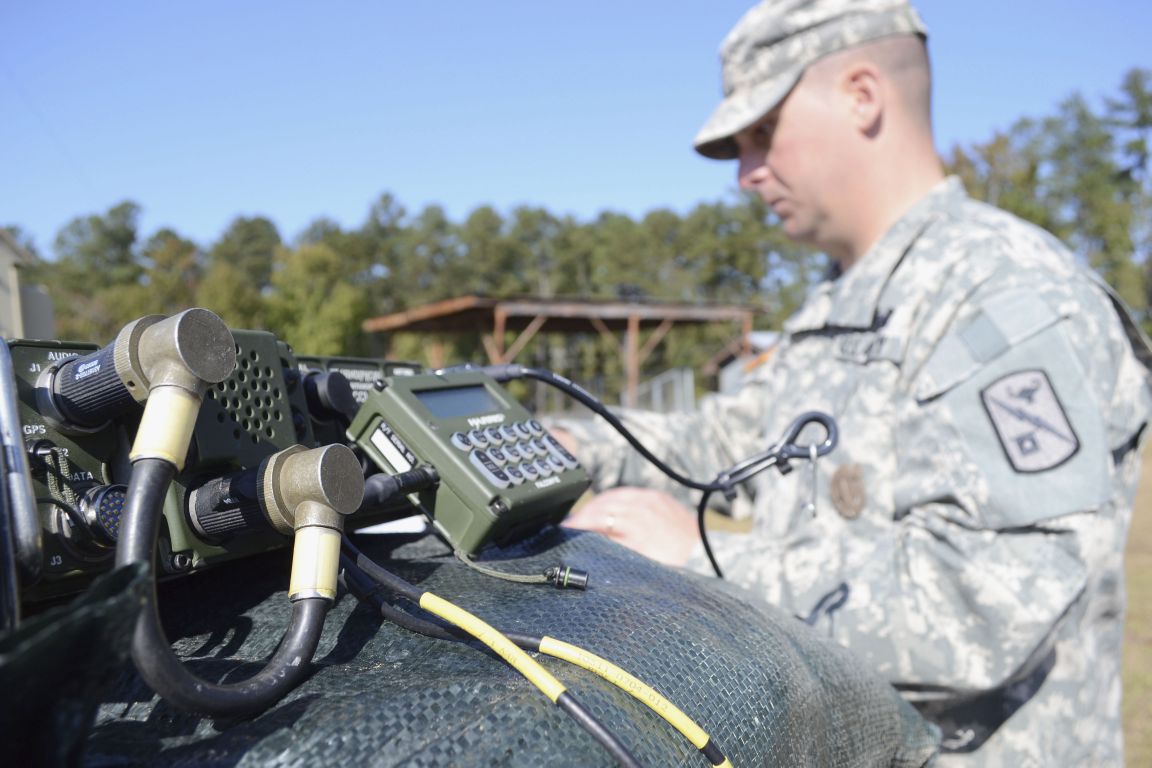
The US Defense Advanced Research Projects Agency (DARPA) have officially selected several research teams to lead the agency’s work in developing technologies to expand and enhance wideband software defined radio (SDR) capabilities across the US armed forces.
The teams, consisting of participants from industry and academia, “will explore a diverse set of technology approaches” in the field of wideband radio frequency (RF) interference cancellation for current and future SDR platforms, as part of the Wideband Adaptive RF Protection (WARP) programme, agency officials said in a statement.
“Wideband software-defined radio systems provide unprecedented access to the RF spectrum and are beginning to proliferate throughout the [US Department of Defense – DoD] and commercial applications as a result. Unfortunately, as bandwidth increases, dynamic range tends to decrease, which impacts the radio’s sensitivity and performance,” DARPA officials said.

A US Army radio operator-maintainer works on a AN/PRC 1510, high-frequency radio at Fort Gordon, Georgia. (US Army )
In an effort to reduce that dynamic range reduction, while maintaining expanded wideband capability for SDR’s, WARP programme officials are exploring advanced in the use of tuneable filters and signal cancellers “to manage external interference as well as ... to address self-interference”, in those radio platforms, agency officials explained.
Specifically, the WARP research teams will plan and execute experimental work on intrinsically switched electromagnetic (EM) resonator technologies, as well as multiferroics, acoustics, and photonics to enable tuneable RF frequency filter and signal cancelling capabilities for SDR systems. Those technologies would be paired “with new circuit architectures, heterogeneous device integration, and advanced RF packaging”, which would provide SDR operators adaptive control of those RF tuning and signal cancelling capabilities, according to DARPA.
Looking to read the full article?
Gain unlimited access to Janes news and more...


